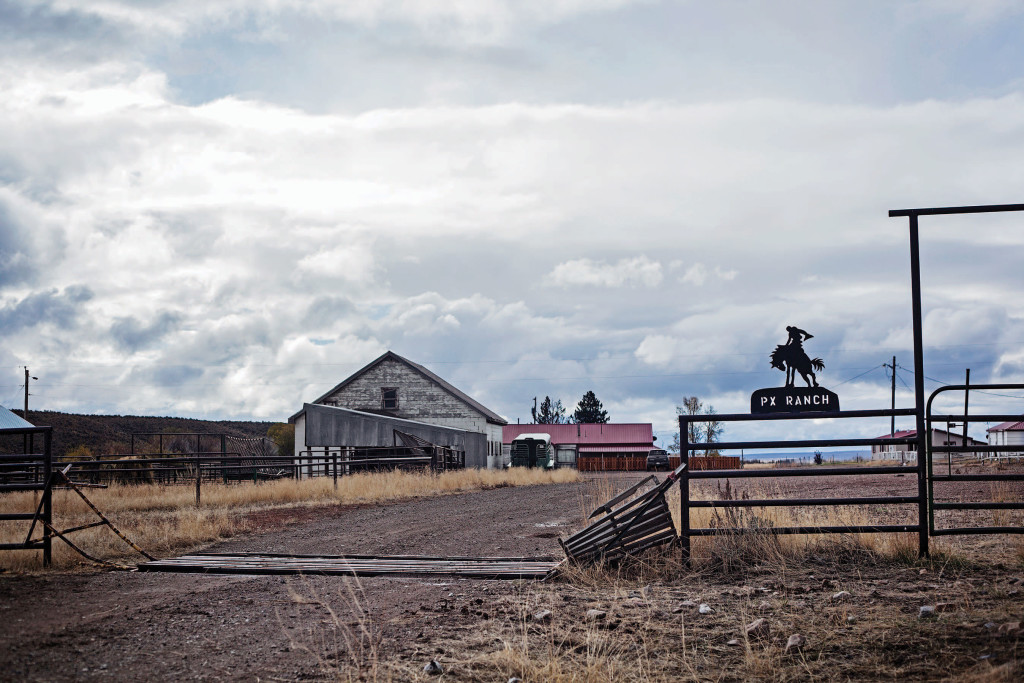Tending to livestock in Nevada’s Great Basin was and is a lonely job. But the life and the landscape aren’t as sparse as they might seem.
Tending to livestock in Nevada’s Great Basin has always been a lonely job. Early Basque settlers in the northern part of the state even coined the term txamisuek jota, or “struck by sagebrush,” for the social anxiety one experiences from being out on the range too long.
It’s a lonesome-looking landscape. Nevada’s high desert stands expansive, vacant — inspiring or abysmal depending upon the moody forces that govern the region. Valley floors rise up from roughly 5,000 feet, doubling in elevation to become rocky alpine ranges largely unseen by Interstate 80 passersby. Driving through, the uninitiated only see how barren it seems. But ask anyone who’s spent time atop a horse in the high desert, and they’ll tell you it’s not ugly. It’s the sagebrush sea.

Ghost towns and modern diggings dot the hillsides, reminders of the fickle temperament of the land and stubborn will of mankind. Through more than 150 years of mining booms and busts, the cattle industry has remained a constant here. And so have the cowboys. Known for their gypsy streak, they lead a vagrant lifestyle, tending to stay on only a few months at each outfit. The seasonal nature of the job allows for constant movement, providing a little change of scenery and relief from the rural isolation.
The Basque first came to the region for the gold rush, but many gravitated to the herding that was part of their native culture and ended up ranching. Founded by Basque immigrants in 1874, the YP — ostensibly named after the YP Desert in Elko County — has traditionally made room for the roving cowboy. The behemoth ranch, whose grazing permits extend beyond the Idaho state line, runs 5,500 cows and employs a minimum of eight cowboys year-round. In warmer months, buckaroos camp or sleep in line shacks, primitive shelters on the outer fringes of the ranch, where they monitor the cattle and water supplies.
But however large the outfit or starkly beautiful the land might be, after a few months of cowboying on the sagebrush sea, txamisuek jota is likely to set in. Unless you’re lucky enough to find chemistry with a coworker or the cowboss’ daughter, opportunities for romance are limited. A trip to town could be an hour or more — often on dirt roads — and once there, church and the local bar are about the only places to fraternize with the opposite sex. Shawn McWilliams, originally from Wyoming and now a hand at the YP, adheres to the BYO-lady philosophy. He and his wife met in college and moved to the isolated ranch together, circumventing the hurdle of long-distance dating.
Family is a built-in hedge against loneliness, and ranching tends to run in families. Buckaroos often come from ranching families, though it’s not a prerequisite. A thick skin and willingness to learn can carry inexperienced cowboys through their first jobs. Veteran ranch hand Norbert Gibson recalls arriving at the YP, fresh out of high school, wearing corduroy pants and tennis shoes. Upon inspection of his attire, the office manager observed, “He don’t look like no cowboy.”
Gibson’s parents had driven him from their home in Owyhee, Nevada, a small town on the nearby Duck Valley Indian Reservation, to the YP, where he first learned the trade that would see him through the next 30 years. A bit of good-natured hazing and decades of on-the-job training have shaped Gibson into a well-known fixture on the cowboying circuit. An attempt at listing all the ranches he’s worked at stalls at 12 and includes some of the biggest names of the modern era: the Winecup, Gamble, PX, and so on. Since August 2015, Gibson and his 10-year-old son, Hoss, have called the JD Ranch home. Hoss travels an hour south to Eureka, Nevada, for school each day, catching a ride with neighbors because there aren’t enough children in the valley to warrant a bus.

Darci De Boer wasn’t raised on a cattle ranch but began picking up summer ranch gigs while studying at the University of Idaho. She credits her degree in agricultural production for landing a position at the PX Ranch, where she’s involved in managing the feedlot business in addition to day-to-day cowboying. During her tenure at the PX, De Boer has befriended women from neighboring ranches and dated a co-worker, but she keeps to herself most evenings, reading and braiding horse tack. Slow and labor-intensive, braiding is a popular pastime in a region where cellphone reception and social lives are intermittent at best.
Like many rural Nevada teens, Justin Sorensen was homeschooled and itching to strike out on his own. After completing high school early, he got wind of an opening and left his family’s ranch in Ruby Valley in March 2015 to join his uncle on the YP. The lanky blond cowboy comes from a community nearly as remote as the YP, so transitioning to the lifestyle wasn’t much of a stretch. He works on college correspondence classes from a sparse room in the bunkhouse and trains his horses, four of which accompanied him in the move. The eldest of eight children, he doesn’t yet know what his future will hold, but he notes that his younger brother, Kaysen, eagerly awaits the day when he, too, can sign on.
When he does, Kaysen will join not just his brother but the ranks of generations of cowboys who have chosen a life on the sagebrush sea, undeterred by the long days and low pay on a big outfit. Kaysen will ride for the opportunity to avoid sitting behind a desk. He’ll ride in the pursuit of independence and adventure. And he’ll ride with respect for the cowboys who came before and an unabashed love for that lonesome land.
From the November/December 2016 issue.






















